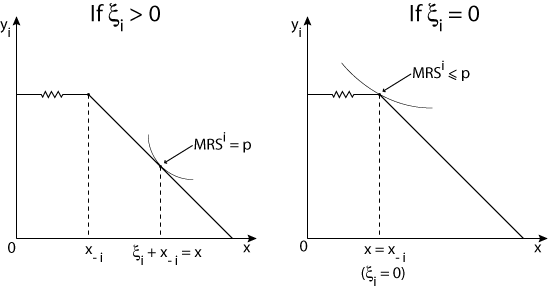|
|
|
|
The Individual's Public Good Choice Problem in the Market |
|
The following section is intended for intermediate/upper intermediate students who are familiar with optimization techniques. It summarizes the differences between the market and Pareto efficient outcomes in mathematical form. |
|
The individual i chooses how much of the public good to buy on his own ( |
|
max ui(x, yi) = ui(x-i + |
|
First order conditions:
MRSi |
|
Graphical Illustration of First Order Conditions |

|
|
Numerical Example |
|
Suppose a unit of public good costs |
|
Pareto Efficiency: |
|
Market Outcome: |
|
|
Page source: http://www.econport.org/econport/request?page=man_pg_individualchoice
|